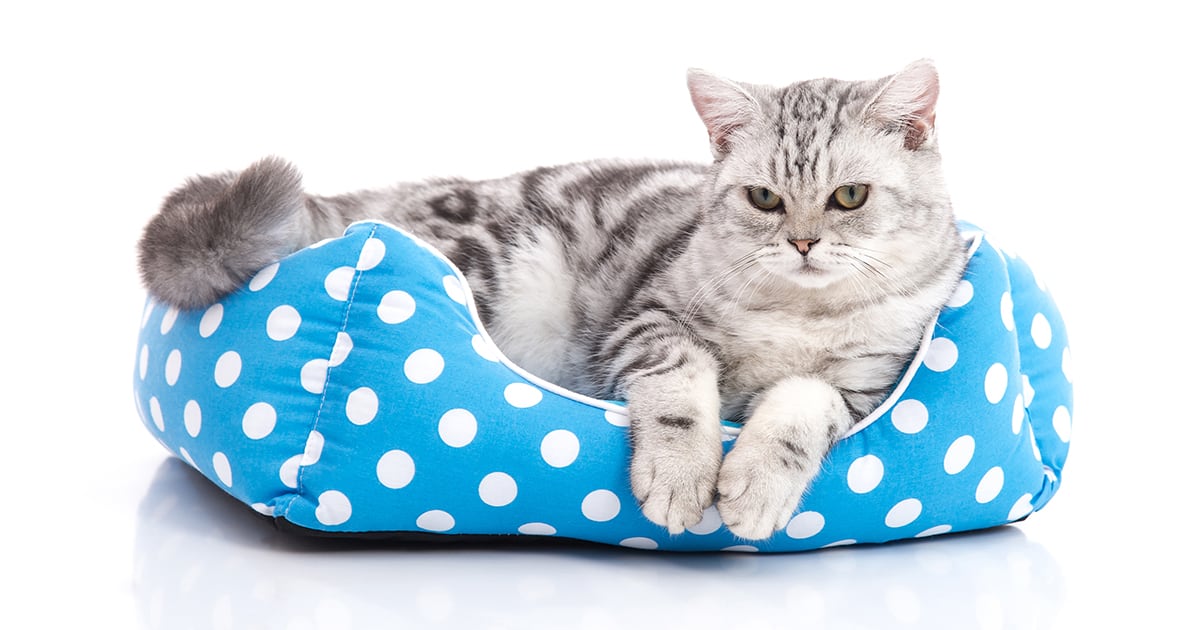Cats have a reputation for being low-maintenance pets. It’s often assumed they have few needs beyond what can be ticked off a pet store checklist: food and water bowls, a litter box, a scratching post and toys.
The truth is that cats have very specific environmental needs, or preferences about their physical surroundings and interactions with humans and other cats. When those needs aren’t met — mostly because pet parents simply aren’t aware of them — cats can become extremely stressed.
At the same time, cats are experts at hiding stress or illness, so their anxiety often goes unnoticed. But stress can lead to conditions like feline idiopathic cystitis, or an inflammation of the urinary bladder lining, as well as in unwanted behaviors.
To help increase awareness of cats’ unique needs and reduce their stress, veterinarians with the American Association of Feline Practitioners and the International Society of Feline Medicine published guidelines that identified five core feline environmental needs, and included suggestions for meeting these needs.1
Five basic environmental needs
According to the guidelines:
1. Cats need a safe place. While cats have a history of hunting prey, they’ve also had to protect themselves from being prey. Although they may no longer stalk their meals, they still have a need to feel safe and in control of their environment. If they feel threatened by a new cat or a work crew in the house, they need a place where they can retreat.
Something as simple as a cardboard box, an elevated perch or a cat carrier can work. It should have room enough for only one cat, and ideally have two escape routes so the cat doesn’t feel it can be trapped inside. There should be at least one of these resources for each cat in the household.
2. Cats need space. Cats like to enjoy their food, litter box, scratching post or bed in private, without competition from another cat or the presence of a human.
Distributing these resources around the home helps reduce fear and provide cats with a sense of control. Kitties in multiple-cat households shouldn’t be expected to share a single litter box or food and water bowls. There should be at least one litter box for each cat, plus one more, as well as a choice of other resources.
3. Cats need to hunt. Cats are natural predators who like to stalk, pounce and capture prey. But that doesn’t mean your cat needs to go after the local wildlife.
You can recreate the experience by hiding kibble in different locations of the house or offering a food puzzle they can maneuver with their paws to receive a reward. Interactive toys, such as a wand with dangling feathers or a stuffed mouse that can be dragged across the floor, can offer them the thrill of the chase and the capture. To keep boredom at bay, rotate toys periodically.
4. Cats need human interaction (on their own terms). Some cats are more social than others, but all need some kind of positive, consistent human contact.
Pet parents should never force interaction but let the cat approach first. Ideally, allow the cat to sniff you, then you can gently pet the cheeks and head. Make time for one-on-one time for each cat daily, whether it’s petting, grooming, snuggling or playing, to help strengthen the bond between you and your cat(s).
5. Cats need to use their scent. Cats use their keen sense of smell to gather information about their environment. Part of what they smell are pheromones released by feline scent glands, located on their paw pads, cheeks and lips, forehead, and tail. Household cats rub against areas of the house to mark their boundaries and feel secure.
Some scents may be upsetting to cats. Strong cleaners, perfumed litter or even the strange smell of a familiar cat that’s been at a veterinary clinic for the day can cause stress. If possible, avoid strong scents and use synthetic feline pheromones, such as Feliway, to promote calm among household cats.
By understanding and meeting your cat’s environmental needs, you can help boost your cat’s comfort and well-being. This, in turn, can reduce your cat’s stress, minimize certain illnesses and unwanted behaviors as well as improve the bond between you and your feline companion.
RELATED POST: GETTING TO THE BOTTOM OF LITTER BOX PROBLEMS
1Ellis SLH, Rodan I, Carney HC, et al. AAFP and ISFM Feline Environmental Needs Guidelines. J Fel Med Surg 2013(15):219-230.








